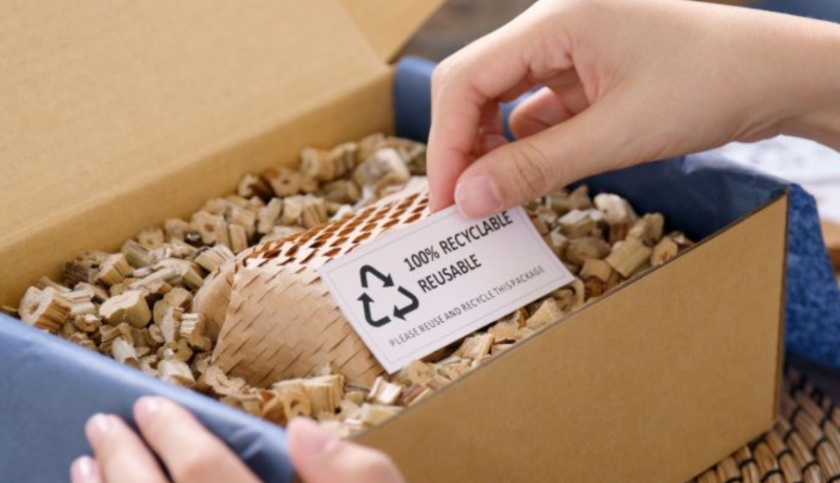What do you do when you’re finished with your chewing gum? Hopefully, you don’t just spit it out on the street or stick it under a table like an animal. Ideally, you’d find a proper receptacle for it. Until recently, the immediate choice would be a trash can, but thanks to a U.K. designer, there might be a life after chew for your old gum.
Designer Anna Bullus is transforming used chewing gum into products like drinkware and boots, and, by doing so, is eliminating waste and dependency on fossil fuels.
According to the BBC, Bullus began her project about 10 years ago when she started paying attention to the amount of litter on the streets—cigarette butts, food bags and gum were plentiful. She thought about how there’s really no good way to recycle chewing gum, despite how ubiquitous it is in society.
“One of the litters I found was a piece of chewing gum, and as a designer, I was completely amazed there was nothing actually being done to recycle it,” she told BBC.
She did a little research, and found that the primary ingredient in chewing gum (the gum base, if you can believe it) is a synthetic rubber similar to plastic called polyisobutylene.
Since polyisobutylene is good enough to be used on bicycle tubes, the chewed gum should be good enough for other uses, she thought.
To get people to donate their used gum, she created pink bubble-shaped bins for dropping of gum, which she called a Gumdrop. And, guess what: Those bins were made from recycled chewing gum.
What a great idea! These pink Gumdrop Bins turn old bits of #chewinggum into recycled products @GUMDROPLTD #Sustainability https://t.co/SYsxCaFruz
— Jenny Eagle (@jeagle10) March 12, 2018
Here’s how it works:
Bullus takes the gum she collects from the Gumdrops to a recycling plant, and mixes the gum with other recycled plastic polymers. She estimated that each object is made of a minimum of 20 percent chewing gum. She then works with a plastic molding specialist to create her objects, like travel cups, which contain about 42 pieces of used gum each.
The plan took off when high-traffic areas like the University of Winchester and railway stations signed up to use the bins. This not only limited the waste on the street, but gave Bullus the supplies necessary to create more products.
To create awareness for students, she gave out travel cups so students could see where their used gum was going.
“Students would give the cup a sniff to check it didn’t smell of mint or bubble gum,” Liz Harris, the university’s environmental officer, told BBC. “It’s because so much of the chewing gum sold on the high street is a polymer [so it] can be used to make new products. When people get it, it’s a really nice moment.”
British company @GUMDROPLTD turns used chewing gum into travel mugs, rulers, combs and other #promoproducts https://t.co/ksgwRrlXTg #Sustainability #recycling pic.twitter.com/MFKjHn9oVh
— Theresa Hegel (@TheresaHegel) March 8, 2018
This saved the university about £6,000 (a little more than $8,000) in cleaning costs.
“When you look at the finished product, you do take a while to adjust to the fact that this has been in somebody’s mouth previously,” Brett Nixon, a manager at the molding plant Bullus uses, told BBC. “But once you get over that fear it’s easy. By recycling it and giving it another lease on life it’s helping the environment. It’s an absolutely fantastic idea.”
Since litter is such a problem, U.K. Parliament has considered taxing chewing gum companies if they don’t do more to fight the problem. For those companies, Bullus’ project has been a huge blessing, and has incentivized Wrigley to invest in Gumdrop financially as well as by donating surplus material from its Plymouth, U.K., factory.
Gumdrop is currently selling items like drinkware, pencils, guitar picks, lunch boxes and more on its online store.
Until researchers create a fully biodegradable chewing gum to alleviate the issue of litter on streets, finding creative ways to recycle a product that most users dispose of without a second thought.


